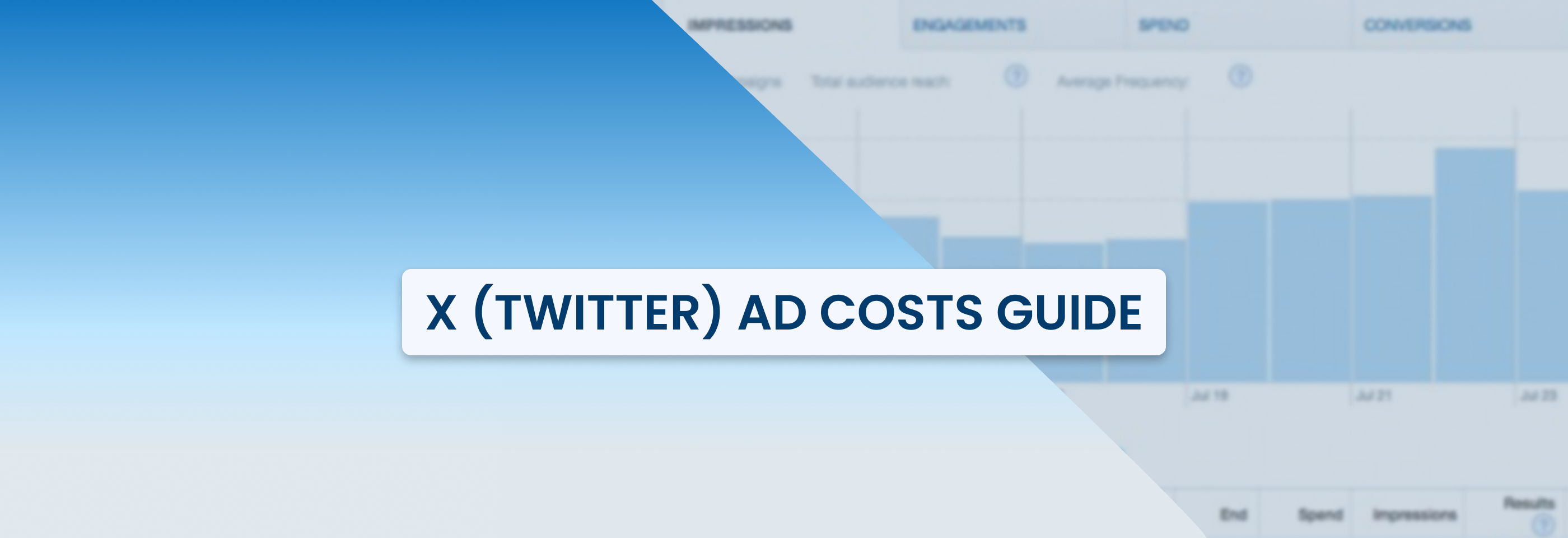Facebook Ads for Ecommerce: Key to Business Growth
2024-08-24
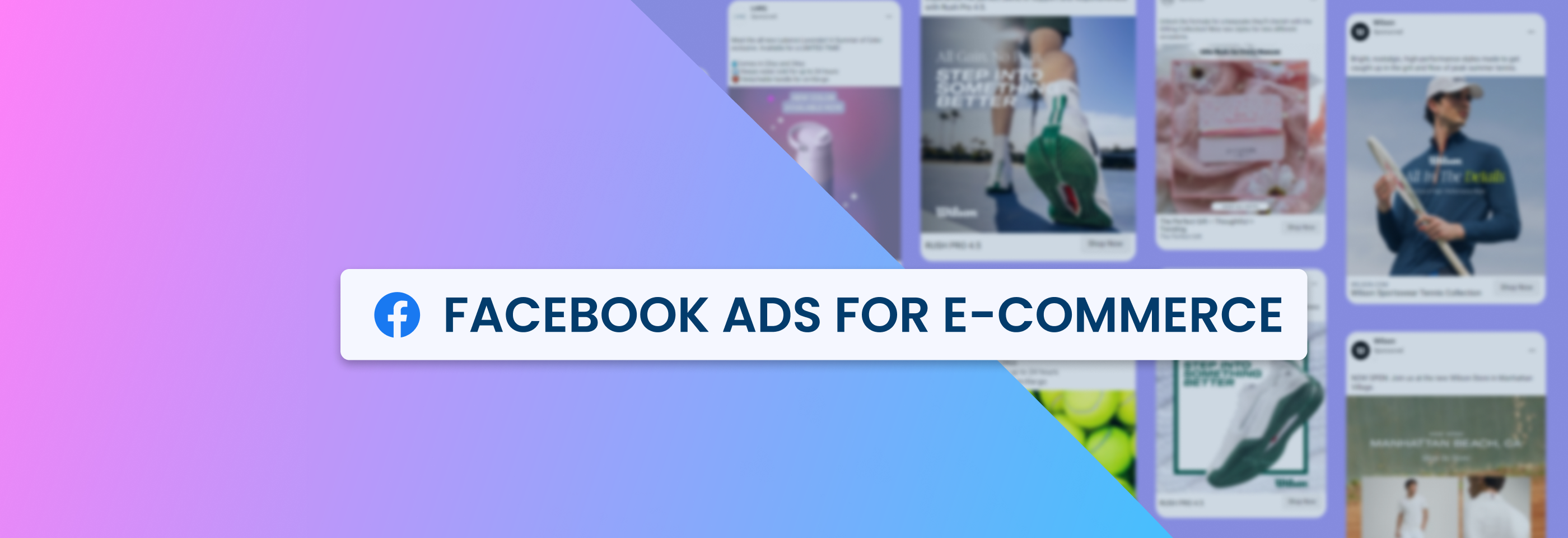
If you’re running an Ecommerce business, it can be hard to stand out with so many online stores competing for attention.
Facebook ads can help with that: they allow you to connect with new customers and boost sales on a platform used by billions of people. Whether you use Shopify or another Ecommerce platform, Facebook ads can be the key to making your business stand out and be different.
Without further ado, let’s talk about why running Facebook ads can be the best decision for your Ecommerce business and discuss some tips to get the best results.
Why use Facebook ads for Ecommerce?
Here’s what makes Facebook ads special:
1. Huge audience reach
Right now, Facebook has over 3 billion users, many of whom are ready to shop. Advertising here means you can reach millions of potential customers, no matter the size of your business.
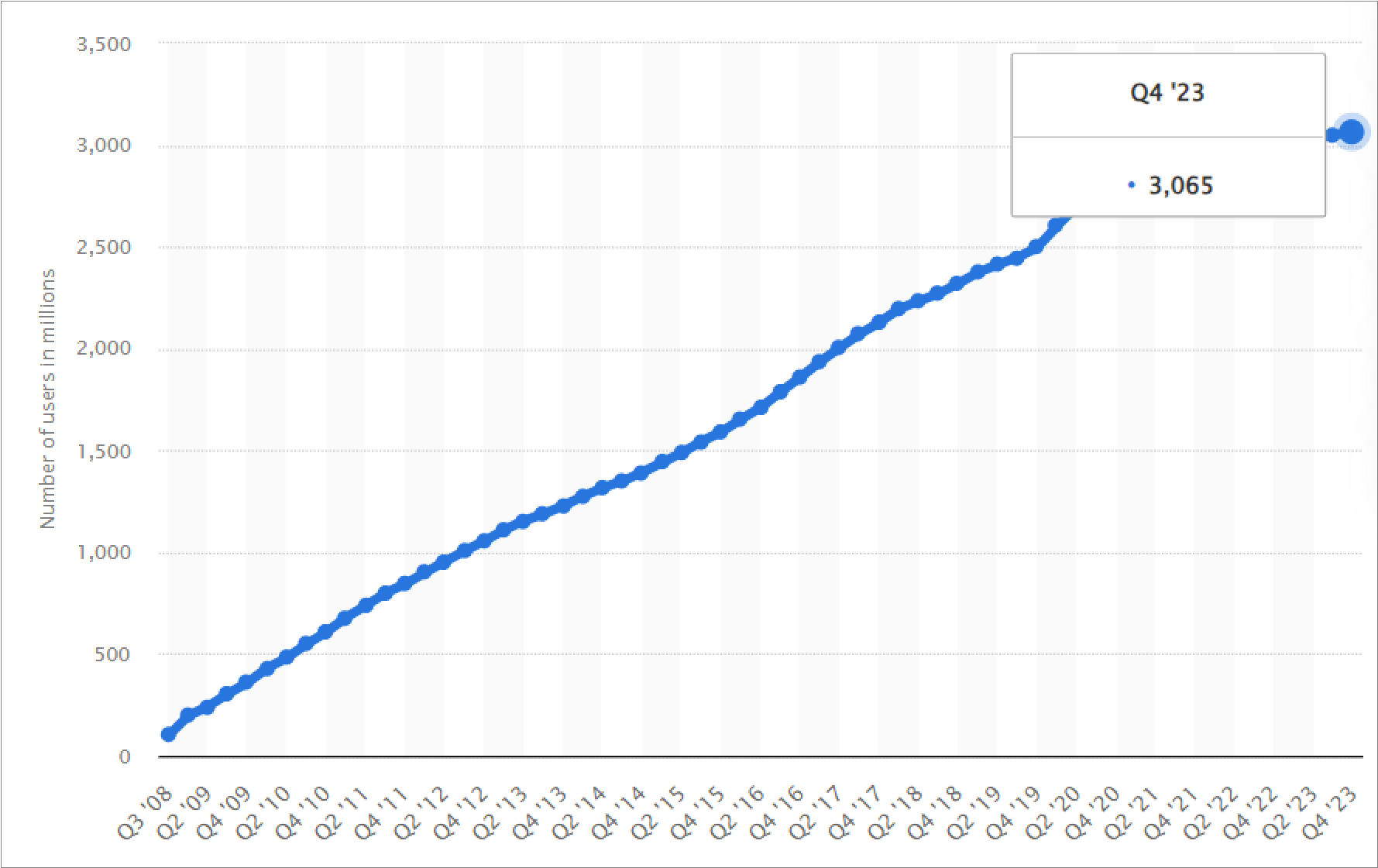
Source: Statista
And it’s not just about the raw numbers. Facebook lets you target the right people with its advanced tools: no matter whether niche and narrow or broad and general, you can find the right targeting option for practically any goal or type of campaign.
Also, let’s not forget that Meta advertising is more than just Facebook: if you’re using Meta Ads Manager, you can easily run your ads on Instagram, Audience Network, and other Meta-owned platforms. The more ground you cover, the more eyes you can catch, and that means more conversions and a higher ROI.
2. Budget-friendly ads
One of the standout benefits of Facebook ads is how budget-friendly they are, especially for Ecommerce businesses.
Unlike other platforms where costs can quickly add up, Facebook lets you start with a small budget, which can be less than $5 a day – you can test your ads without spending a fortune.
The beauty of Facebook’s cost structure is that you pay for what you get. You can set daily or lifetime budgets and adjust them as needed, so you’re always in control of your spending. Plus, Facebook’s bidding system is pretty advanced and works to get you the best results for your money, ensuring you’re getting the best value for your money.
In short, Facebook ads are a budget-friendly way to reach potential customers and grow your business. Want to learn more about how much you might spend and how to make the most of your budget? Check out our guide on Facebook ad costs for all the details.
3. Retargeting power
If you’ve been running your Ecommerce business for some time, you probably know that not everyone buys on their first visit.
Usually, people browse your website, add items to their cart, and then leave for a number of possible reasons: high prices, delivery options that don’t suit them, or because they weren’t interested enough or decided to purchase from one of your competitors.
No matter why someone chooses not to buy from you (or maybe they haven’t even reached the conversion stage), retargeting helps you bring them back. For example, you can show them ads for the exact items they looked at and give them a little nudge to finish what they started.
Facebook offers you plenty of opportunities and ways to retarget people: you can use different kinds of data for this, from what you collect on your website to what Meta collects on its properties.
Plus, if you’re using Meta Ads Manager, you’re not just reaching people on Facebook. Your retargeting ads can also appear on Instagram, Messenger, and the Audience Network – your potential customers will see them wherever they spend their time.
4. Flexible ad formats
Another cool thing about Facebook ads is the variety of ad formats, so you can pick what works best for your Ecommerce business.
- Want to show off several products? Use carousel ads that let people swipe through different items.
- Got a story to tell? Try video ads to share your brand’s story or show your products in action.
- Need to remind people about products they checked out? Advantage+ Catalog ads (formerly known as Dynamic ads) will automatically show them the exact items they were interested in.
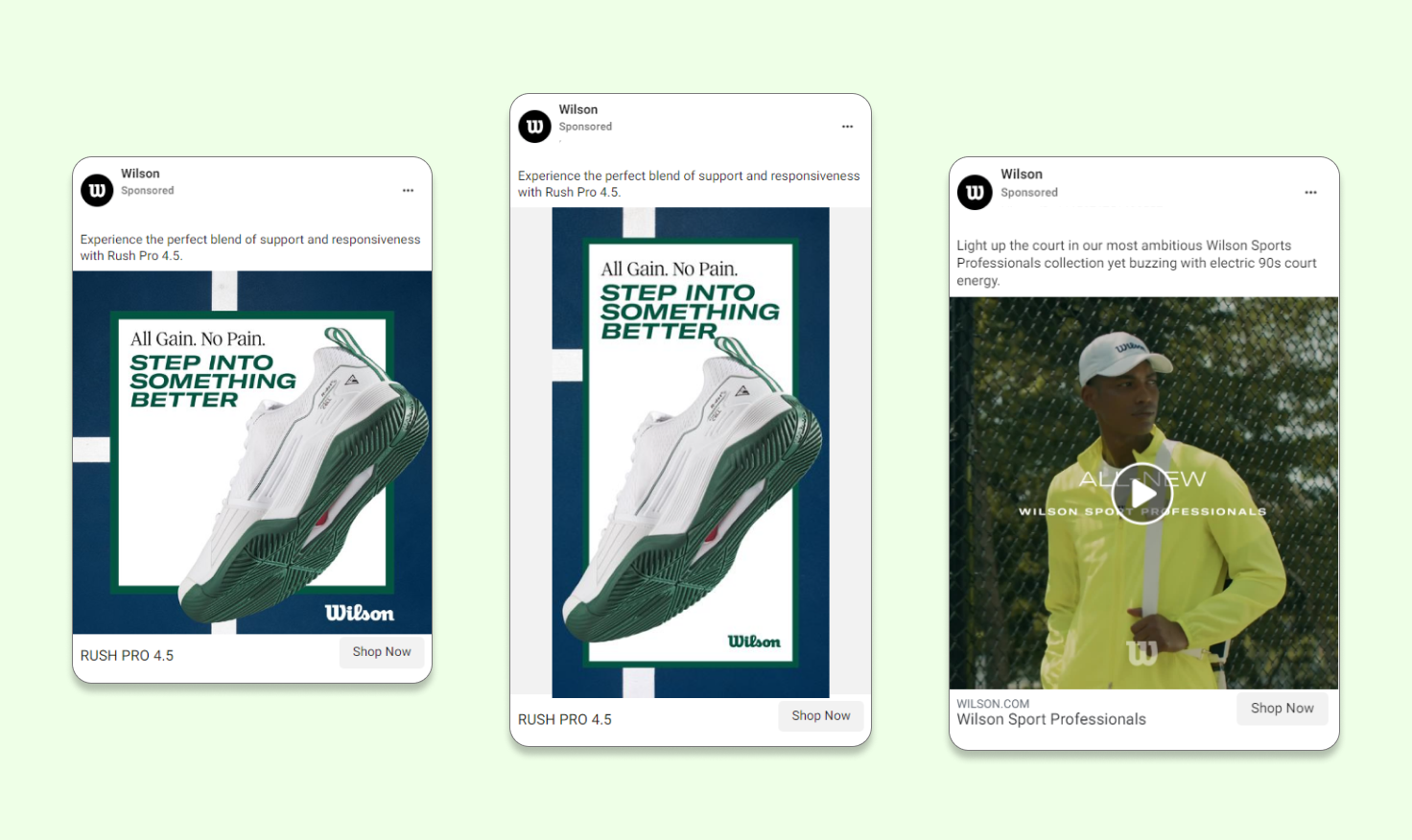
You can test different formats and see what clicks with your audience – no need to limit yourself to just one type of ad.
5. Room for growth
Last but not least, the growth of your Facebook ads and the growth of your business go hand in hand.
As we’ve mentioned, you can start with a small budget and easily scale up as you see good results without changing your whole strategy. Once you’ve figured out your ideal audience and messaging, you can gradually increase your budget to reach more people.
Facebook offers several AI advertising tools that can help you scale your campaigns in an easier way and just make them more effective in general. For example, there are options like the Advantage campaign budget (previously the Campaign Budget Optimization) that help you manage your budget better, which is essential for scaling.
If you enable this feature, Facebook will automatically shift your budget to top-performing ad sets – you won’t have to do this manually. So, as you scale up, you get the most out of your money.
Now that you know why Facebook Ads are so great for your Ecommerce business, let’s look at some tips to help you get the most out of them.
How to run Facebook ads for Ecommerce: best practices
There are many strategies and best practices recommended by advertising experts and Ecommerce business owners, and they definitely deserve your attention.
For now, we’ll focus on several practices that can be used for most types of Ecommerce businesses and ad campaigns. They can help you get better results, avoid wasting money, and keep your business growing steadily.
1. Set the right funnel structure
Running Facebook ads is a great way to grow your online store, but only if you have the right strategy in place.
The first step is to set up your ad campaigns according to your sales funnel. This means thinking about your audience in different stages – top-of-funnel (TOFU), middle-of-funnel (MOFU), and bottom-of-funnel (BOFU) – and adjusting your budget and targeting to each stage.
The major part of your budget should be allocated to the top-of-funnel campaigns aimed to introduce your brand to people who’ve never heard of you before.
The goal is simple: get in front of as many potential customers as possible. Since this is a brand awareness stage, the bulk of your budget should go here: you want to attract new eyes and build excitement around your brand.
Your audience should also match this goal: since you want as many relevant people as possible to learn about your business, it’s best to use broad targeting. If you use detailed targeting, stick to the necessary filters only or use the Advantage detailed targeting.
Another good option is lookalikes, especially the ones you create based on your customer data, like purchase history or website traffic. People in these lookalike audiences have similar traits and behaviors to your existing customers, so they’re likely to find your offers relevant.
You can make lookalikes based on people who’ve bought from you, people who were close to buying but didn’t end up doing it (i.e. those who left items in their carts), and people who visited certain pages on your website. It also makes sense to choose a higher percentage for your lookalikes: being too specific can limit the number of people you can reach.
Then, you can allocate the majority of the remaining budget to the middle-of-funnel campaigns. At this stage, you need to focus on building trust and nurturing the interest of people who know about your business but aren’t ready to buy just yet.
Here, you’ll target users who’ve already interacted with your brand: watched a video, visited your website, or engaged with your Facebook or Instagram posts in the last 30 days. You can use your budget to keep them engaged, provide enough information about your products, and gradually move them closer to purchasing.
Finally, the rest of your budget should always go to the bottom-of-funnel campaigns where things get close to conversions.
People at this stage are ready to buy with the right incentive, so that’s where you want to use retargeting. You can select people who’ve spent some time on your websites checking out different product categories or those who’ve added items to their cart but didn’t check out. A gentle reminder ad can be all it takes to close the deal.
In short, if you have a proper funnel structure, everything else – your budget and targeting, among other things – will fall in line with it. You won’t be playing a guessing game deciding how much to spend on a campaign or whom to target – you’ll have a clear plan to stick to.
2. Get clear on your objectives
Once you figure out your funnel, you’ll have to find campaign objectives on Facebook that match each stage. Incorrectly chosen objectives can lead to budget losses and disappointing ad performance, so it’s important to start with a clear foundation before you launch any campaigns.
Are you trying to increase brand awareness? Drive more traffic to your Shopify store? Or maybe you want to boost sales of a specific product that you’ve got good discounts for?
There are six main Facebook campaign objectives that you can choose from: brand awareness, traffic, engagement, leads, app promotion, and sales. If you know your funnel like the back of your hand and you have clear goals, it won’t be hard to pick the right one.
But there are still some things you should consider. For instance, many experienced advertisers recommend choosing the sales objective over lower-funnel goals like traffic. The reasoning behind this is that you might want to spend your budget optimizing your ads for conversions since that’s probably your end goal anyway, and traffic will come as a by-product of that anyway.
However, as you move your campaign objective lower down your funnel, it’s best to do the opposite with your optimization event. So, for a sales campaign, you might want to let Facebook know that you’re optimizing for adds to cart instead of sales because it’s a more frequently taken action.
That’s done because your ad sets will need at least 50 of these actions to exit the learning phase, so if you want to speed up this process, it’s better to stick to an “easier” optimization event.
There are a lot of tips like this that you can find online, and some of them are worth following. That being said, always consider testing these tips before you start applying them to multiple ads or campaigns: it’s better to be safe than sorry, so try different strategies out before going full-in on them.
3. Use ad creatives that stand out
When running Facebook ads, make sure to tweak your ad creatives based on where your customers are in their buying journey. Instead of using the same visuals and messages for everyone, personalize your ads to match your specific goals and the audience you’re targeting.
When you’re running brand awareness campaigns, you want to catch the eye of people who might not know your brand yet.
So, mix things up with a variety of ads: try carousel ads to show off multiple products, single image ads to highlight key items, and fun video ads to share your brand story or show your products in action. Experiment with different formats and messages to see what gets the best reaction.
When you reach the middle of the funnel, your potential customers know about your brand but need a bit more convincing. This is the perfect time to use social proof and storytelling: show off customer reviews, ratings, and success stories to build trust. User-generated content is especially effective here – seeing real people enjoying your products can really help reassure potential buyers that they’re making a good choice.
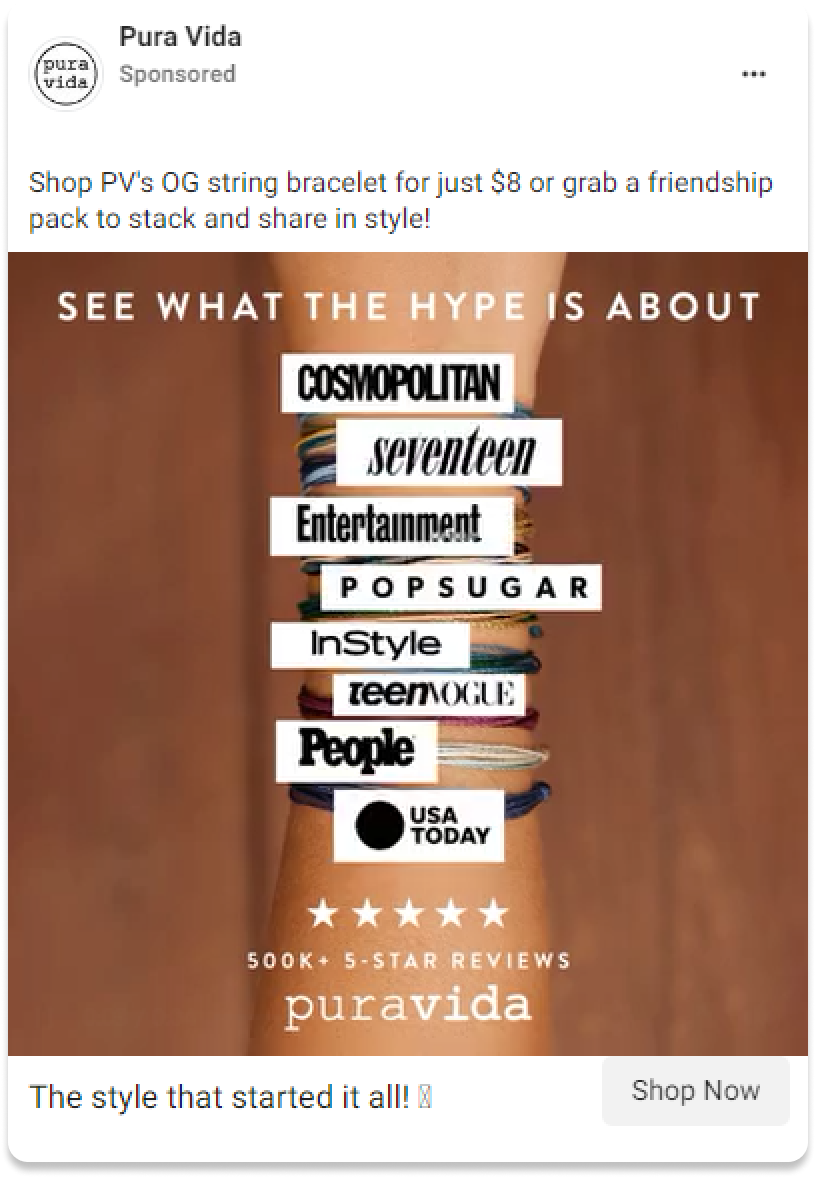 If you've got something to brag about (like being mentioned in magazines or having good reviews), don't hesitate to share it with your potential customers.
If you've got something to brag about (like being mentioned in magazines or having good reviews), don't hesitate to share it with your potential customers.
For bottom-of-funnel campaigns, where your audience is almost ready to buy, you want to tackle any last-minute doubts they might have. Highlight incentives like free shipping or a quick checkout, and use urgent messages to encourage immediate action. This helps turn those almost-buyers into actual customers.
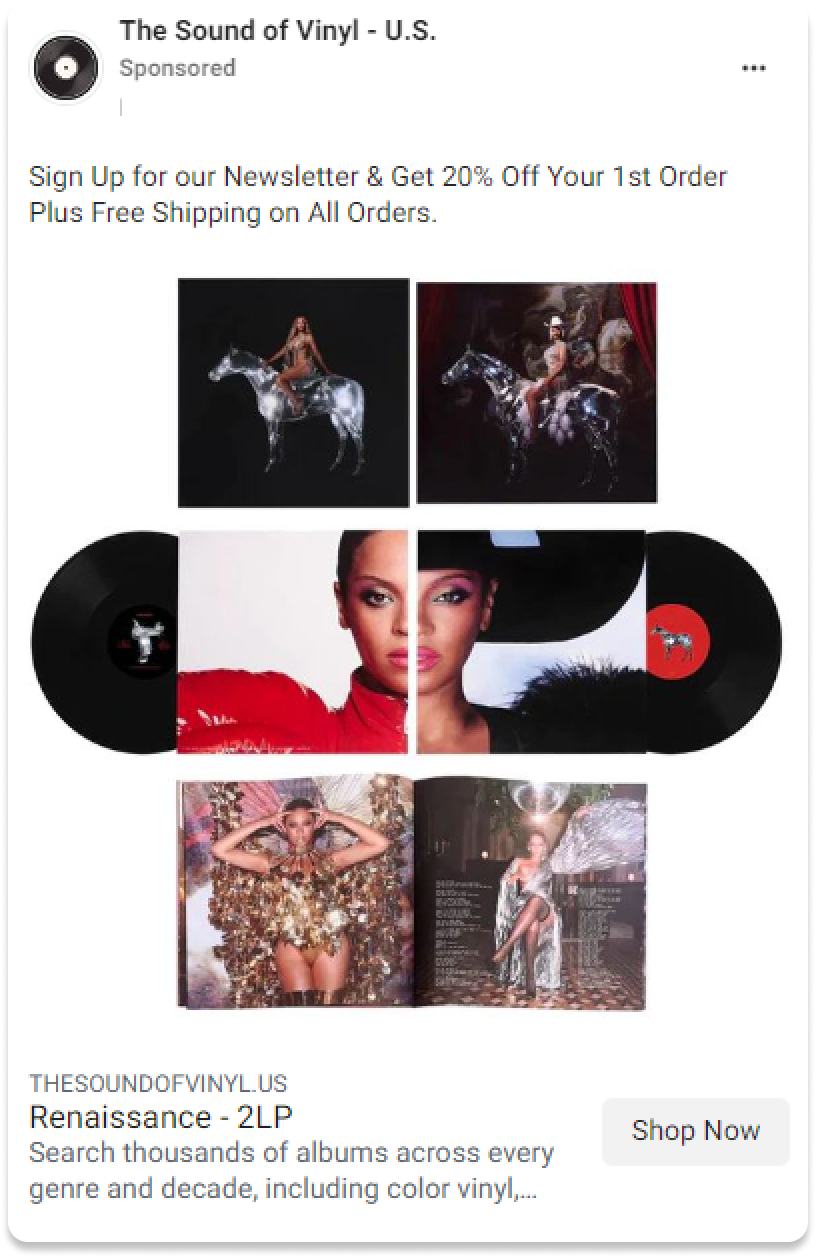 Mentioning the incentives like discounts and free shipping works well for retargeting campaigns.
Mentioning the incentives like discounts and free shipping works well for retargeting campaigns.
As for ad copies, they also matter a lot and should be tailored to different campaign goals and audience segments.
If you’re new to Facebook ads or running a brand awareness campaign, start with a catchy, short line to grab attention. This first line should really hook people in, so make sure it's engaging right from the start. You can try using cliffhangers to create intrigue to get people curious, or use storytelling to make them connect with you.
When it comes to the copy length, it depends on how well-known your business is. If people don’t know you yet, you might need a bit more detail to explain what you offer and how it solves their problems. But if they’re already familiar with your brand, a shorter, snappier ad can be just right.
The same goes for FOMO words and phrases like “time-limited” or mentions of discounts. These can make your ad seem too pushy and might turn people off, especially if they’re at the beginning stages of your conversion funnel. For them, you might want to choose something more neutral and close to organic content. But with people who are already interested in your brand, these words can be more effective – use them for middle- and bottom-of-funnel campaigns.
Also, emojis in your ads can be a game-changer: they make your ad stand out from the text-heavy ads and draw attention to what matters most. Emojis add personality and help get your message across in a fun way, which often leads to higher engagement and more clicks.
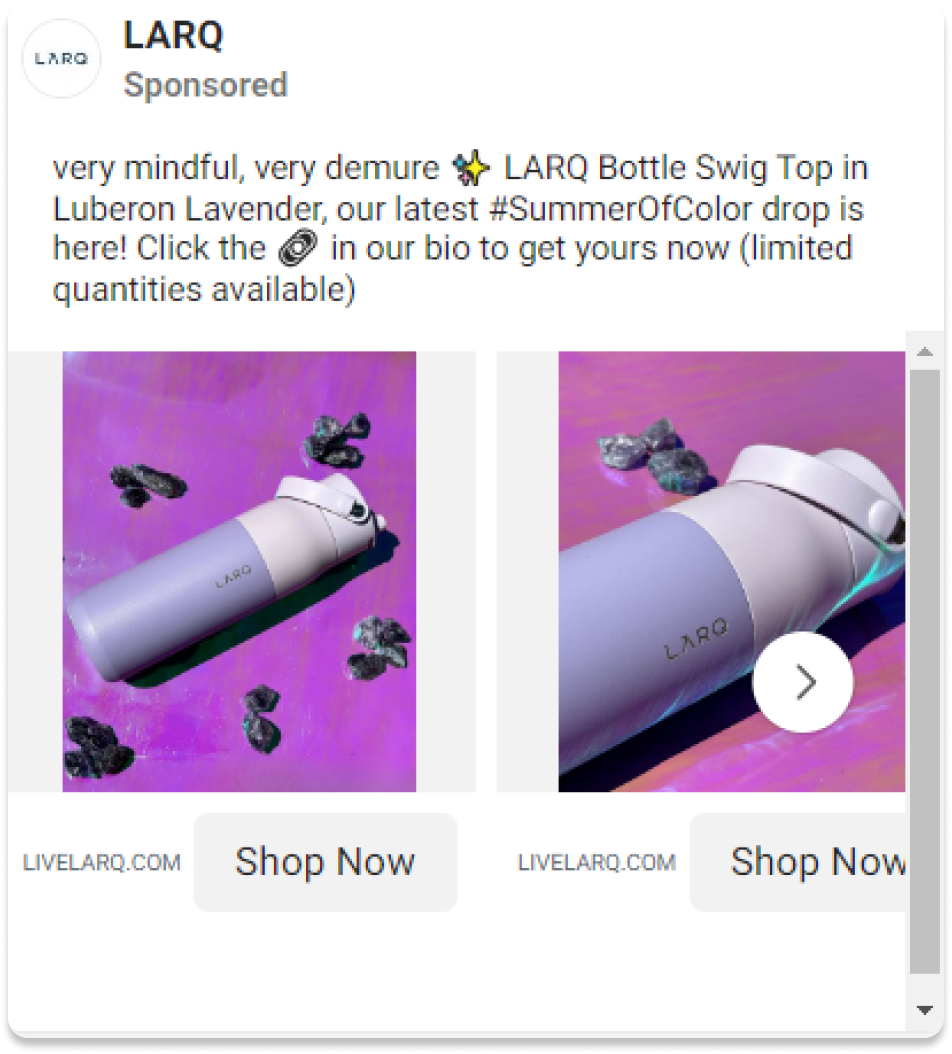 Using emojis correctly and appealing to current trends can help you connect with younger demographics who spend a lot of time online.
Using emojis correctly and appealing to current trends can help you connect with younger demographics who spend a lot of time online.
Finally, make sure to try out different ad formats to see what clicks with your audience. For example, Stories as an ad format are loved by many Ecommerce businesses for a reason. According to Meta, more than half of Facebook users visit the business’ website after seeing their products in a Story – in other words, it’s a great way to make more people enter your conversion funnel.
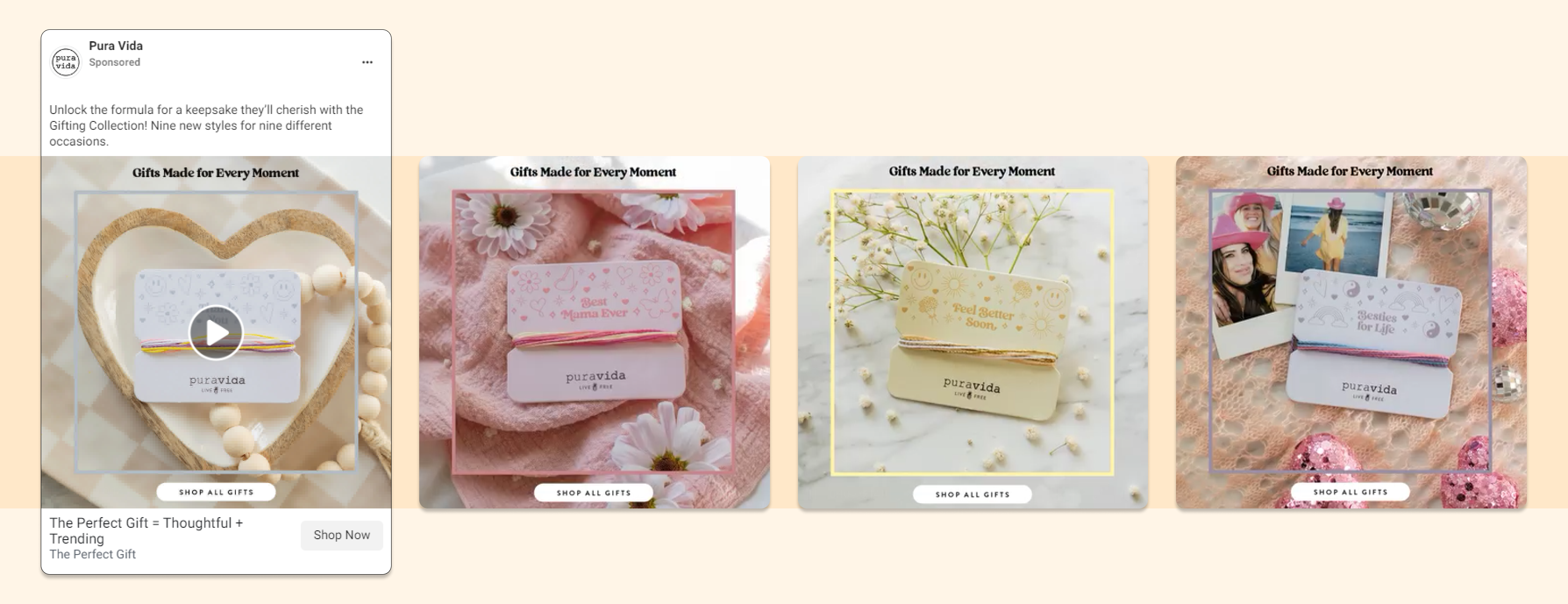
Simple image ads or carousels are effective when your products speak for themselves.
In general, ad formats like Stories and video ads tend to be more engaging and eye-catching, but don’t underestimate the power of simple single-image ads or carousels: they can also be pretty effective if your product speaks for itself. Playing around with these formats will help you find out what works best for your audience.
4. Try Meta Advantage+ Catalog ads
If you want to elevate your Facebook campaigns, Meta Advantage+ Catalog ads can be a great option. Formerly known as dynamic ads, these ads personalize product recommendations based on what users like and do online.
Here’s how it works: you upload your product catalog to Meta, and it automatically creates ads featuring products that match each user’s interests. You can use different formats for various goals like driving sales, app promotion, or generating leads.
These ads can target a broad audience to introduce your brand to new potential customers, or retarget users who’ve visited your site but haven’t made a purchase yet, encouraging them to return and complete their transaction.
The benefits of these catalog ads are pretty clear: they’re personalized and more relevant, and the automated optimization saves you time. However, managing your product catalog and ensuring accurate data can be a bit tricky, and you’ll also have less control over individual ad details.
Consider trying this option – it might just be what your Ecommerce business needs.
5. Don’t forget your landing pages
When running Facebook ads for your Ecommerce store, it’s easy to get caught up in designing eye-catching creatives and perfecting your targeting, but don’t forget about your landing pages – they’re crucial for turning those clicks into actual sales.
First of all, your landing page needs to match what your ad promises. If your ad talks about a special discount or a particular product, your landing page should deliver on that. This consistency helps build trust and keeps potential customers engaged.

Second, make sure your landing page has a clear call-to-action (CTA) that matches the CTA on your ad. Whether it’s “Shop Now,” “Sign Up,” or “Learn More,” the CTA should be easy to spot and encourage visitors to take the next step.
Loading times matter a lot, too. A slow page can frustrate visitors and lead to lost sales, so optimize your landing pages for speed to keep users happy and engaged.
Engaging content is also key. Use high-quality images, appealing color schemes, customer reviews, and compelling text to reinforce the message of your ad and show your website visitors why exactly they should choose your business over others.
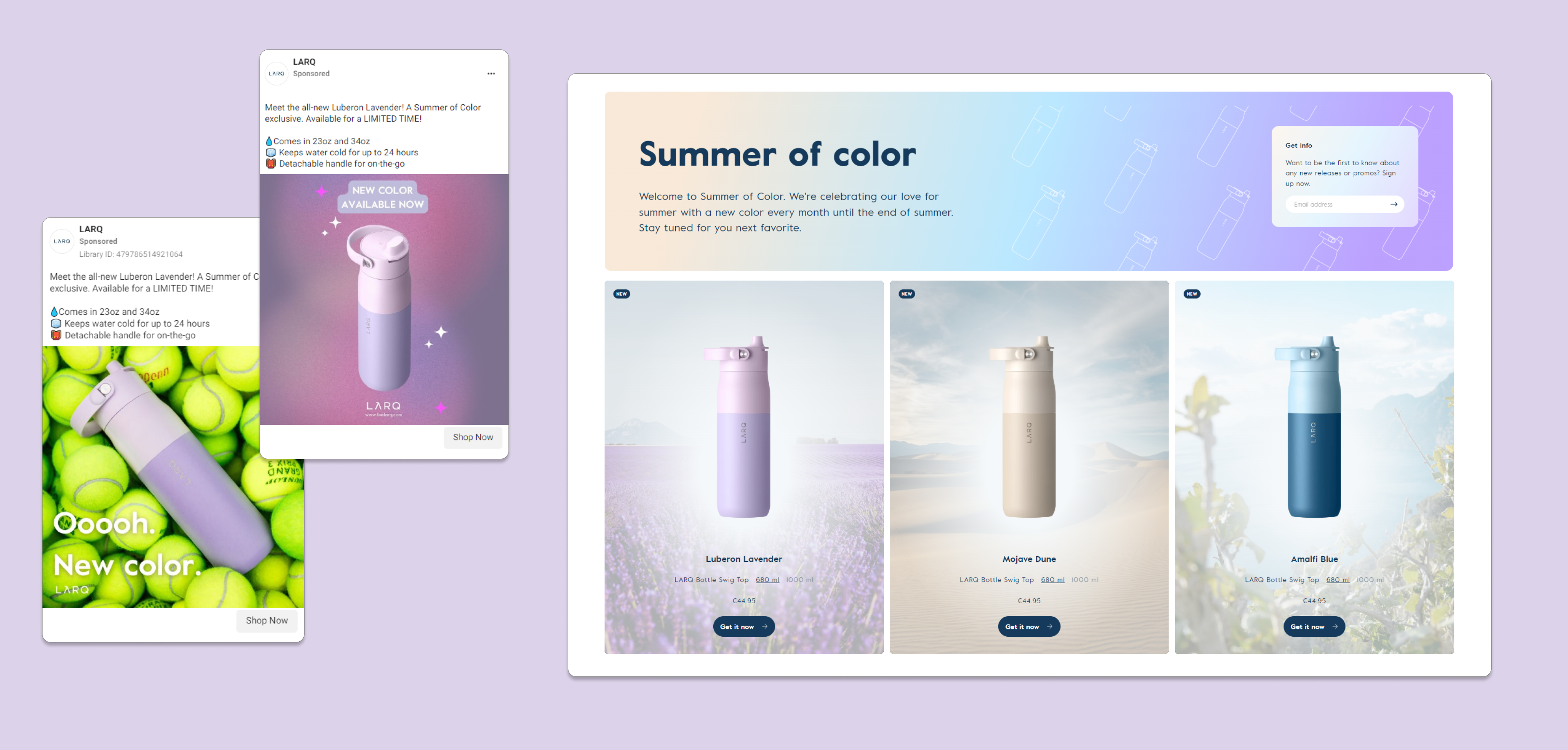
And don’t forget that your landing page needs to look and work as well on mobile devices as it does for desktops. A good number of people shop online using their phones, and you definitely don’t want to lose those on-the-go shoppers because of poorly designed landing pages.
6. Scale when necessary
If during the process of testing and trying different approaches, you see that some ads campaigns are performing exceptionally well or at least better than others, scaling them can help amplify your results.
There are two main scaling strategies you can use:
Vertical scaling involves increasing the budget for your best-performing ads. By doing this, you can reach a larger segment of your current audience without altering the ad at its core. This is useful when your existing ads are already working pretty well for a specific audience and you want to drive even more traffic and conversions.
Horizontal scaling takes a different approach by expanding your reach. This can involve creating new ad sets to target different audience segments or experimenting with new ad formats. For example, if you’ve had success with single-image ads, you can try adding carousel or video ads to see if they perform the same or better with new or existing audiences.
When you’re scaling your Facebook ads, be careful to keep your success going strong. Don’t make big changes to your budget: instead, increase it slowly to avoid upsetting the ad performance of Facebook’s algorithms. Keep a close eye on important metrics like click-through rates, conversion rates, and cost per acquisition to see if the extra spending is actually leading to better results.
Also, pay attention to how different audience segments react to your ads. While expanding your reach to new audiences is a great way to test and grow, make sure to track their engagement and tweak your strategy as needed.
Recap
Running Facebook ads can really make a difference for your Ecommerce business. With Facebook’s huge user base, budget-friendly options, and precise targeting, it’s a fantastic tool for boosting sales and growing your brand.
But to make the most of it, you need to get a few things right, like understanding your sales funnel, spreading your budget between campaigns based on their goals and your priorities, choosing the right creatives for different audience segments, and so on.
This article provides the basic tips that can help you get started and advance. So, don’t hesitate to try Facebook ads and as always, keep testing, experimenting, and monitoring your ad performance – that’s how you get real results.

